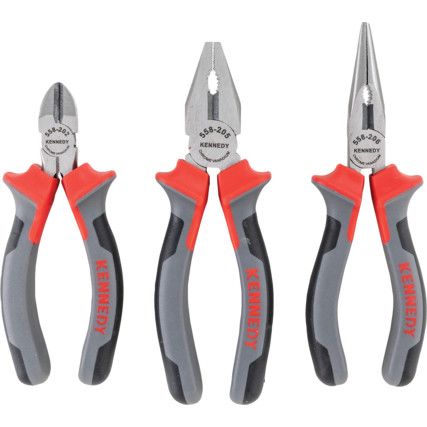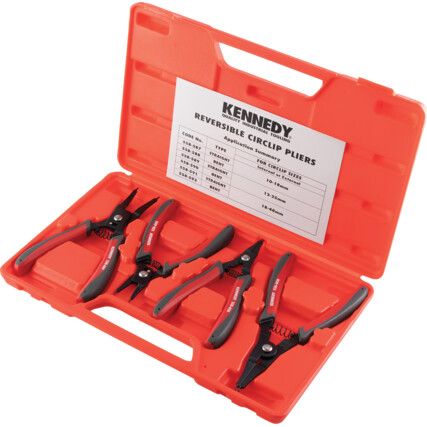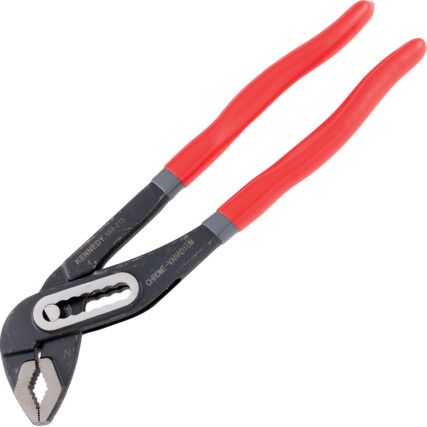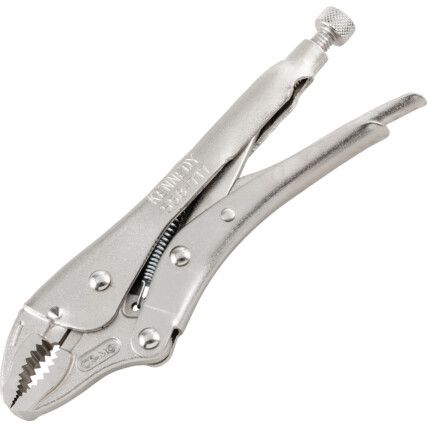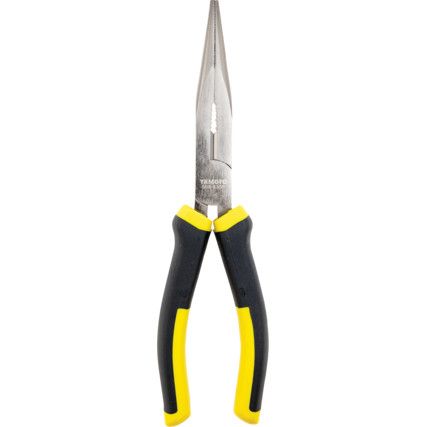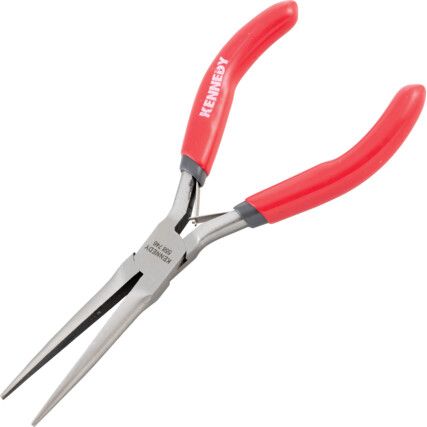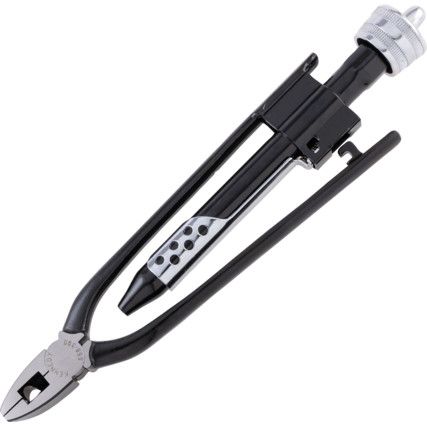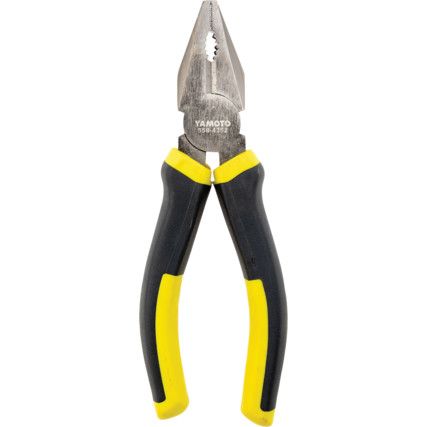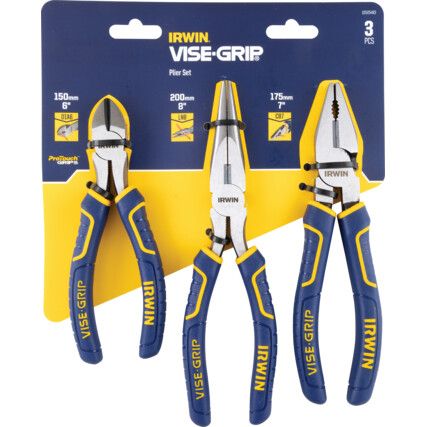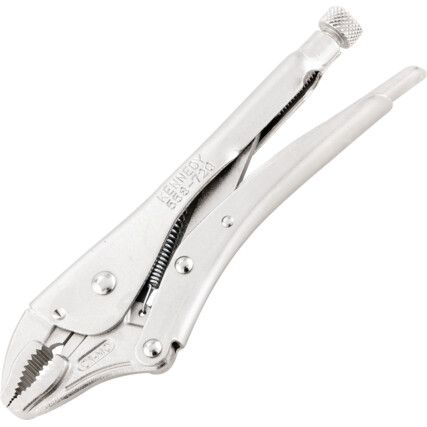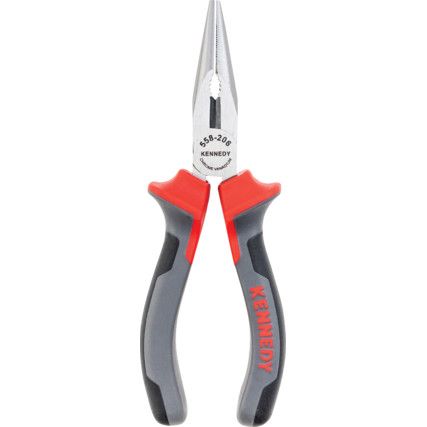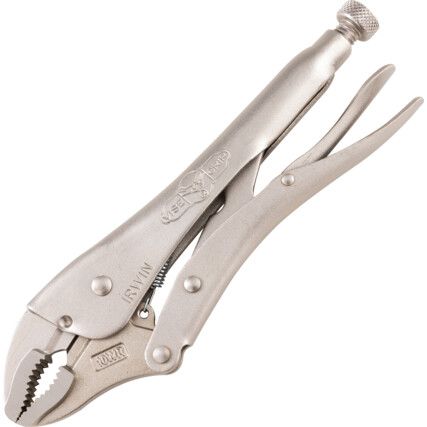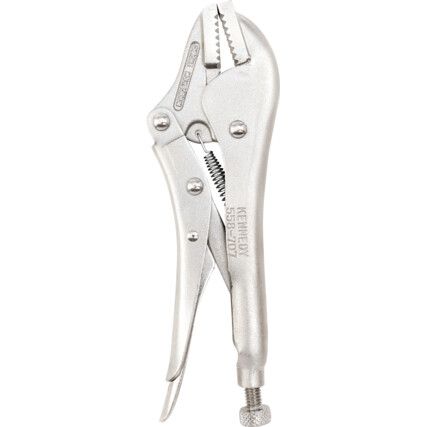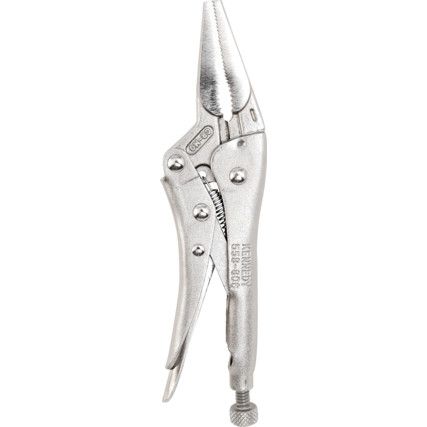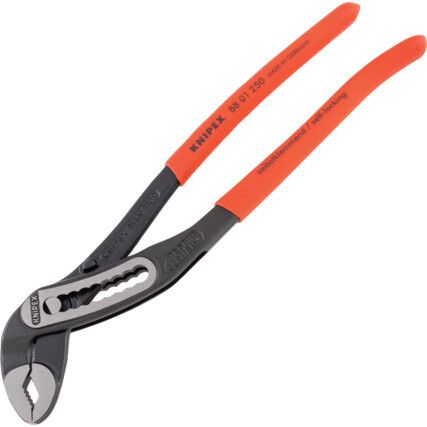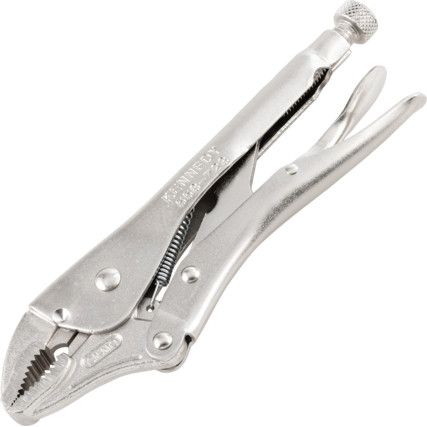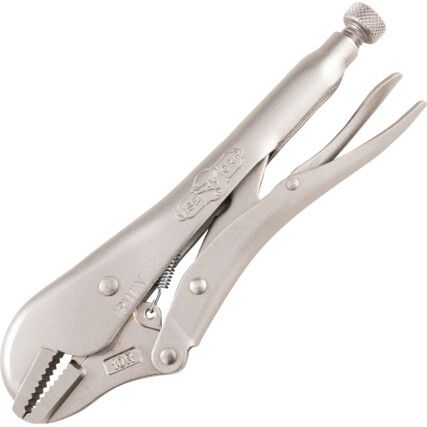Pliers
From the most amateur of DIYers to the most professional industry tradesman; everyone needs a dependable set of pliers in their toolbox. Cromwell stocks a wide range of high-quality pliers, from trusted brands such as Bahco®, Yamoto®, Facom®, Ridgid® and many more. Explore our pliers guide for help selecting your ideal pliers.
What are pliers?
Pliers are a multi-purpose hand tool fairly basic in design - their simplicity is their strength. They consist of two handles for applying force, two jaws perfect for gripping or cutting, and a single pivot point to convert all that force into usable torque.
Why buy pliers?
A good pair of pliers effectively grip any object with ease, giving users the grip to apply torque where normally they couldn't. Whether you're bending, gripping, cutting, wire stripping, nail removing, or just about anything else - it's the pliers that will help you get the job done time and time again.
This is why picking the right set of pliers is so important to professionals. You need something that's as versatile as it is dependable; as durable as it is practical - and that's why Cromwell stocks one of largest collections of pliers available.
When are pliers used?
Pliers are one of the most versatile hand tools available, with a huge range of practical uses around the shed, workshop, or factory. Typical uses for pliers include:
• Gripping objects
• Stripping or splicing wires
• Holding objects for stabilisation
• Removing nails / pins
• Bending or straightening
• Edge cutting
• Snipping leather / fabric
If you're looking for the ideal set of pliers for your job but aren't sure about the best ones for your needs, feel free to ask our experts for specialised advice.
Types of pliers
When choosing pliers, consider the type that's best for your needs:
• Circlip pliers - Circlip pliers are, as the name suggests, designed to install or remove circlips. Circlips (circular metal clips) are used almost everywhere - from your plumbing to your food blender and just about everywhere else. This makes circlip pliers very popular with plumbers or DIYers.
• Flat nose pliers - Flat nose pliers are valued for their ability to attach crimp beads, which are used by model workers and jewellers to hold attachments in place. They excel at reshaping and moulding wires without damaging them.
• Cutting pliers - Cutting pliers (or 'cutters' for short) are designed for cutting rather than gripping. They provide a clean cut on wires and nails - and can often reach confined spaces that other cutting tools cannot.
• Combination pliers - Combination pliers offer the best of both worlds, thanks to their ability to both cut and grip objects with ease. The ends are generally designed for gripping, whereas a sharp indented blade further up the jaws allows for clean cuts. These are valued by tradespeople who are looking for a highly versatile set of pliers.
• Long nose pliers - Long nose pliers are typically used by electricians and craftsmen for smaller, more intricate tasks. Their long jaws make them excellent for working on smaller objects or in confined spaces, and the thinner design means users are able to grip small objects with unparalleled precision.
• Wire twisters - Wire twisting pliers are valued by engineers and automotive technicians for their ability to cut and twist wires with ease. Their design allows them to be precise even in environments prone to vibration or disruption.
Considerations when choosing pliers
• Cutting / Gripping power - If you use your pliers in heavy-duty scenarios, it's important to guarantee they're up for the job. For cutting, ensure the blades are a suitable material and quality to easily slice the objects you're cutting. Check the span of the plier grips to ensure you're able to apply enough torque.
• Insulation - Particularly important for electricians, some pliers have insulated handles to prevent shock or injury. Insulated handles are typically found on cutting pliers.
• Plier feed - The feed of the pliers refers to how deep they can grip or cut. The longer the feed, the deeper the cut. To easily gain a good idea of their feed, refer to the measurement of the jaws when they're fully opened. The wider the gap, the thicker the object that can be cut or gripped by the pliers.
Pliers jargon buster
Interchangeable plier tips
Interchangeable plier tips are typically designed for circlip pliers. They allow a singular set of pliers to be adapted to any size of circlip, meaning professionals don't have to carry around multiple sets of pliers.
High leverage
If your pliers are 'high leverage' it typically means they have longer handles for a tougher grip on objects such as pins and nails.
Standards to look out for
ISO 5743:2004 - This specifies technical requirements that pliers must adhere to.
ISO 5746:2021 - This ensures the principle dimensions of certain pliers are uniform.
FAQs
Are pliers the same as wire cutters?
Wire cutters are a part of the plier family. Wire cutters are pliers that are specialised for electricians, usually with insulated handles and jaws that are perfect for snipping wires.
Which pliers have a built in clamp?
Locking pliers are built for clamping and are used as a portable vice. Locking pliers are sometimes referred to as 'vice grips'.
What pliers to use with jump rings?
Flat nose pliers have small jaws that provide a good grip on jump rings.
Will pliers cut metal?
A number of pliers are designed to cut metal. These are known as cutting pliers, and they have a blade-edge instead of a gripping edge.
Why are pliers coated with rubber insulators?
This is to prevent injury to electricians who often work around live wiring. The rubber insulators do not allow a current to pass through them, which stops the possibility of a nasty electric shock.
